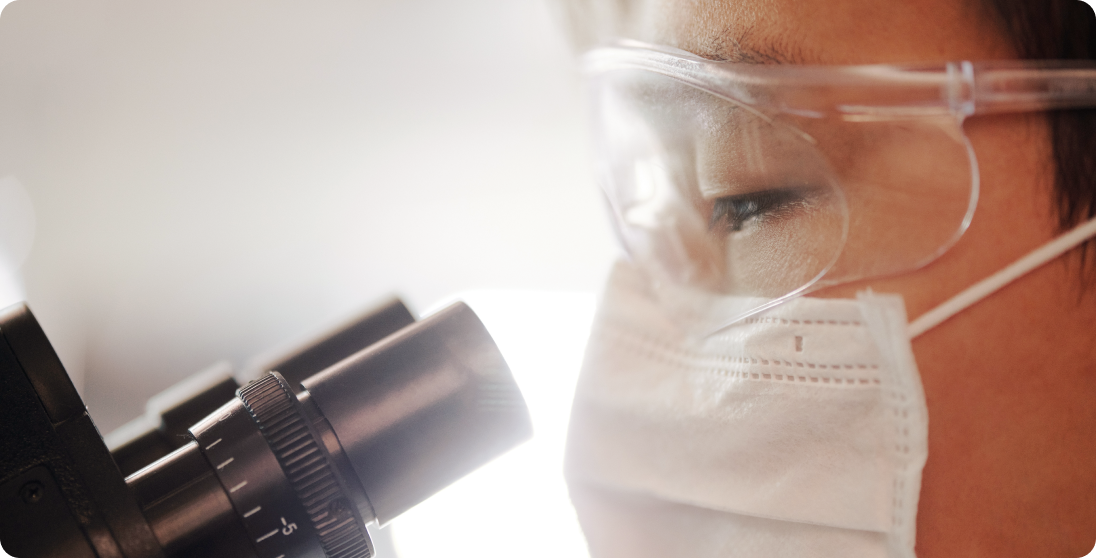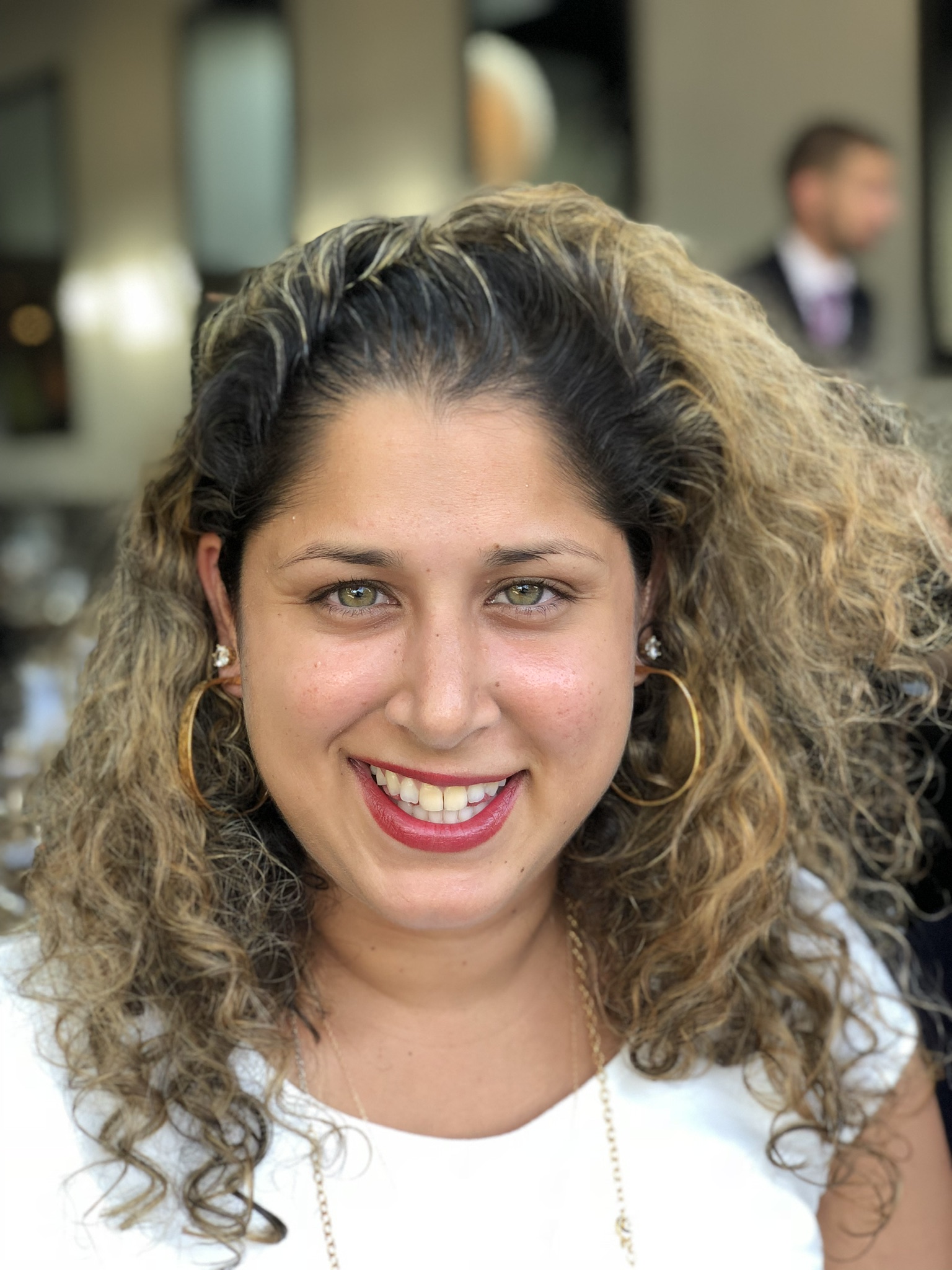


What Is Embryo Banking
Some couples may delay starting their family so much that by the time they decide to have children, it may be difficult, if not impossible, to conceive

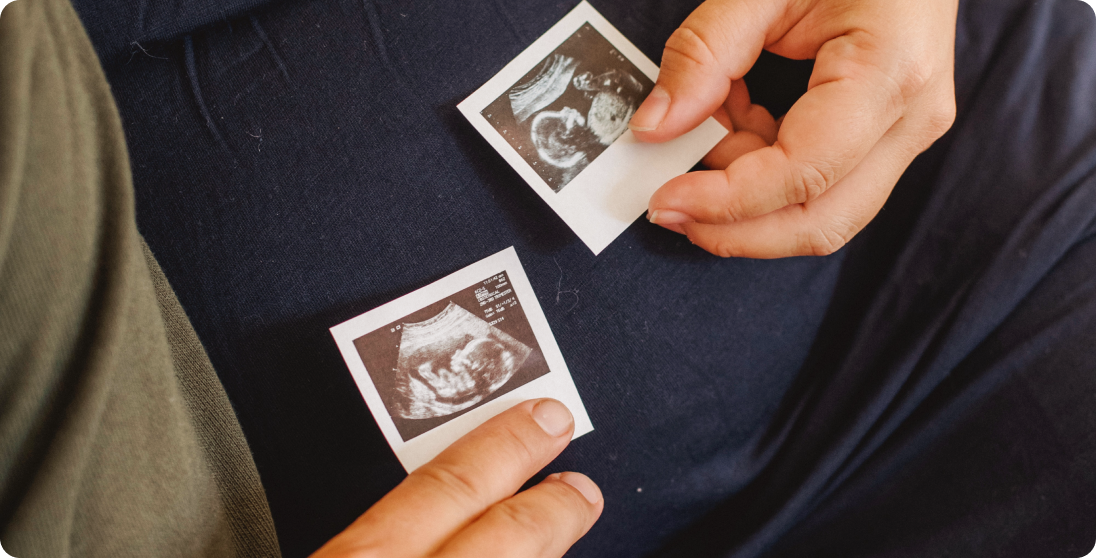
Embryo Banking can be used to postpone having children while pursuing your educational and professional goals.
Impact of Female Age: Female fertility begins to decline many years prior to menopause, despite continued regular ovulations. The likelihood of a successful pregnancy decreases by approximately 10% to 15% each year after the age of 32 and at an even faster rate after the age of 37. Most women aged 42 and older will require Donor Egg In Vitro Fertilization to have a child.
The successful outcome of the Embryo Banking treatment depends primarily on the patient’s age at the time of embryo cryopreservation. Unfortunately, the success rates of Embryo Banking appear to decline significantly for older women (40 years or older).
Treatment Logistics:
Embryo Banking consists of retrieving eggs from your ovaries, fertilizing them with your partner’s semen, cryopreserving the resulting embryos, and storing them at our clinic for your future use.
Cryopreserved embryos are kept in liquid nitrogen, which allows them to remain in a suspended state, “frozen in time.” The uterus does not “grow old,” so the probability of a successful outcome from cryopreserved embryos is independent of the patient’s age at the time the embryos are thawed and transferred into the uterus.
The probability of conception from frozen-thawed embryos would be expected to be the same as with In Vitro Fertilization when “fresh” embryos are transferred. No increase in chromosomal abnormalities, birth defects, or developmental deficits has been noted in children born from cryopreserved embryos.
We use gentle, individualized ovarian stimulation protocols and strive for the highest egg quality. This approach decreases the likelihood of ovarian hyperstimulation without reducing the probability of a successful outcome.
Most patients will be able to continue their everyday lifestyles during their treatment. It is our goal to make your treatment experience pleasant, relaxed, and as natural as possible.
Embryo Banking is a two-stage treatment. The first phase consists of the development and cryopreservation of embryos:
- Ovarian Stimulation
- Egg Retrieval Procedure
- Fertilization of eggs
- Culture of embryos
- Cryopreservation of embryos
- Embryo storage
The second stage consists of the subsequent Frozen Embryo Transfer cycle.
Ovarian Stimulation: There are several different forms of ovarian stimulation protocols, each with many modifications. Your treatment is always individualized to maximize the probability of a successful outcome.
The selection of an optimal protocol is based on your reproductive history and your pre-treatment evaluation. Below is an example of an Embryo Banking treatment protocol. Your individualized protocol may take less or more time to complete.

Follicle-stimulating hormone (FSH) or a combination of FSH/luteinizing hormone (LH) hormones will stimulate the production of multiple eggs in the ovaries. They are given once a day or once every other day subcutaneously with tiny needles for approximately ten days.
During this time, your progress is monitored by estradiol (estrogen, E2) and progesterone blood levels and ultrasound examinations.
Ovarian stimulation should result in the development of several eggs in each ovary. The ultrasound image below shows a stimulated ovary. Each of the several follicles (dark circles) contains a microscopic egg.
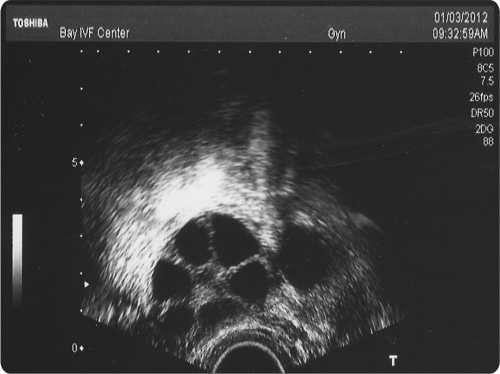
Egg Retrieval Procedure: The egg retrieval procedure is performed at our Center. The procedure only takes a few minutes, and we use very comfortable conscious sedation for analgesia.
Since 1985, we have done many thousands of egg retrievals and are very experienced in retrieving eggs from the ovaries.
Under ultrasound guidance, the tip of a thin needle is passed through the top of the vagina into the cul-de-sac (space behind the uterus). The ovaries are located near the bottom of the cul-de-sac, allowing the tip of the aspirating needle to enter the ovarian follicles and aspirate the follicular fluid from them. The fluid is examined under a microscope to identify the eggs.
Fertilization of Eggs: On average, twelve to sixteen eggs are aspirated during the egg retrieval procedure. The eggs are identified under the microscope and placed in petri dishes filled with culture medium. The composition of the medium resembles the fluid secreted by the Fallopian tubes. This allows the eggs and embryos (fertilized eggs) to develop in our laboratory environment at the same rate as inside the Fallopian tubes.
The male partner collects a semen specimen by masturbation on the day of egg retrieval. The highest quality sperm are extracted from the semen and combined with the eggs three hours after the egg retrieval. This process of in vitro fertilization takes place over several hours during the evening after egg retrieval.
If the male partner has never caused pregnancy, or if your test results indicate a possibility of significant male infertility, Intracytoplasmic Sperm Injection (ICSI) is performed. In ICSI, a single sperm is inserted into an egg. This can significantly increase the probability of normal fertilization for selected patients.
Culture of Embryos: Evidence of fertilization can be seen the next day, 16 hours after insemination. The fertilized eggs are transferred into a growth medium and continue to be cultured in our laboratory.
A normally fertilized egg (zygote) will show two pronuclei representing the genetic material from the egg and sperm.
The following day, embryos should divide into 4 cells and, the day after, into 8 cells.
This picture shows a morphologically exquisite, day three, 8-cell embryo. At this stage, human embryos are still microscopic and invisible to the naked eye.

By the fifth to seventh day after insemination, embryos should reach the blastocyst stage (80 or more cells).
This picture shows an advanced stage of blastocyst development. Notice the central fluid-filled cavity. The cells within the blastocyst have already differentiated into the inner cell mass (at seven o’clock) that will give rise to the fetus and the trophectoderm cells that will form the future placenta.
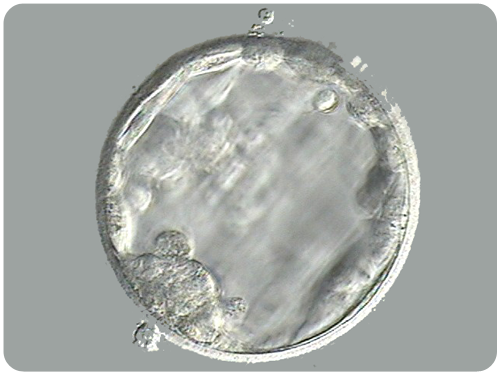
Cryopreservation of Embryos: Embryos that develop normally are cryopreserved (vitrified). Preparation for the freezing process involves removing water from within the embryos and replacing it with a cryoprotective substance to prevent ice crystal formation during vitrification and subsequent thawing. The embryos are then flash-cooled to −196 °C (−321 °F). Such rapid freezing (vitrification) prevents damaging water crystal formation.
Embryo Storage: Following the cryopreservation process, the embryos are transferred to a liquid nitrogen storage chamber in our Center. Theoretically, there is no limit on the length of storage, but conceiving past the age of 40 may result in a high-risk pregnancy.
When you decide to conceive with your cryopreserved embryos, you will have one or two embryos thawed and transferred into your uterus. A large majority of the embryos will survive the cryopreservation and thawing process. The implantation rate of the thawed embryos should be the same as the “fresh” embryo implantation rate.
If you are successful, your pregnancy becomes indistinguishable from conception through intercourse, and your obstetrical care should be no different than if you conceived without any treatment.
Meet Your Doctor

- Dr. Polansky received his medical diploma from Charles University in Prague, the Czech Republic, in 1978.
- After completing his OB/GYN residency at Jewish Hospital in Saint Louis, MO, he graduated from the Reproductive Endocrinology and Infertility (REI) fellowship at Stanford University in 1985.
- In the same year, he co-founded the Stanford IVF Clinic.
- Dr. Polansky obtained board certification in Obstetrics and Gynecology in 1986 and became REI subspecialty board certified in 1988.
- In 1987, he left Stanford University and established Nova IVF.
- In 2011, he founded Bay IVF, where he provides advanced fertility treatments with a holistic approach, utilizing state-of-the-art techniques.
- Dr. Polansky personally performs ultrasound examinations, egg retrievals, embryo transfers, and ovarian and endometrial stimulations for his patients.
- He is deeply committed to his patients and freely shares his cell phone number, ensuring accessibility and availability 24/7.
Frank Polansky, M.D.



Initial Appointment Questions
When you call to schedule your consultation, one of our Front Office Coordinators will ask you a short series of questions regarding your reproductive history.
Your Initial Visit at Bay IVF
Attending a new patient appointment at a fertility clinic can be stressful. Our primary objective is to ensure that your initial visit is friendly and relaxing. We encourage you to ask questions at every step of the process.

1 — When You Arrive
You will be welcomed by one of the clinic receptionists. One of our nurses will measure your height and weight and take your blood pressure

2 — Meet Your Doctor
Dr. Polansky will ask you a series of clarifying questions and then provide you with a summary of the factors contributing to your infertility

4 — Exam Room
One of the nurses will escort you to an examination room. Your examination will begin with listening to your lungs and heart

3 — Ask Your Questions
You will then have a discussion with him about the most suitable reproductive treatment(s) for you. During this time, you will have the opportunity to ask any questions you may have

5 — Ultrasound of the Ovaries
The next step is a pelvic ultrasound to examine the uterus and ovaries. This ultrasound will help determine the number of antral follicles present within the ovaries

6 — Financial Part
Following that, you will have a discussion with one of the financial advisors regarding the financial aspects of your treatment, including potential treatment financing options

8 — Support 24/7
If you have any questions after leaving the clinic, please feel free to reach out to us via phone call, text, or email. Open and discreet communication is an integral part of the care we provide at Bay IVF

7 — What About Time?
Your entire visit is expected to last approximately one hour


Schedule Your Initial Consultation With Dr. Polansky
Online (No Cost) or In-Person
Call or Text Us: 650-322-0500
You can also complete the form below to request your initial consultation


We look forward to meeting you at Bay IVF and, when your treatment is successful, celebrating your new pregnancy!




